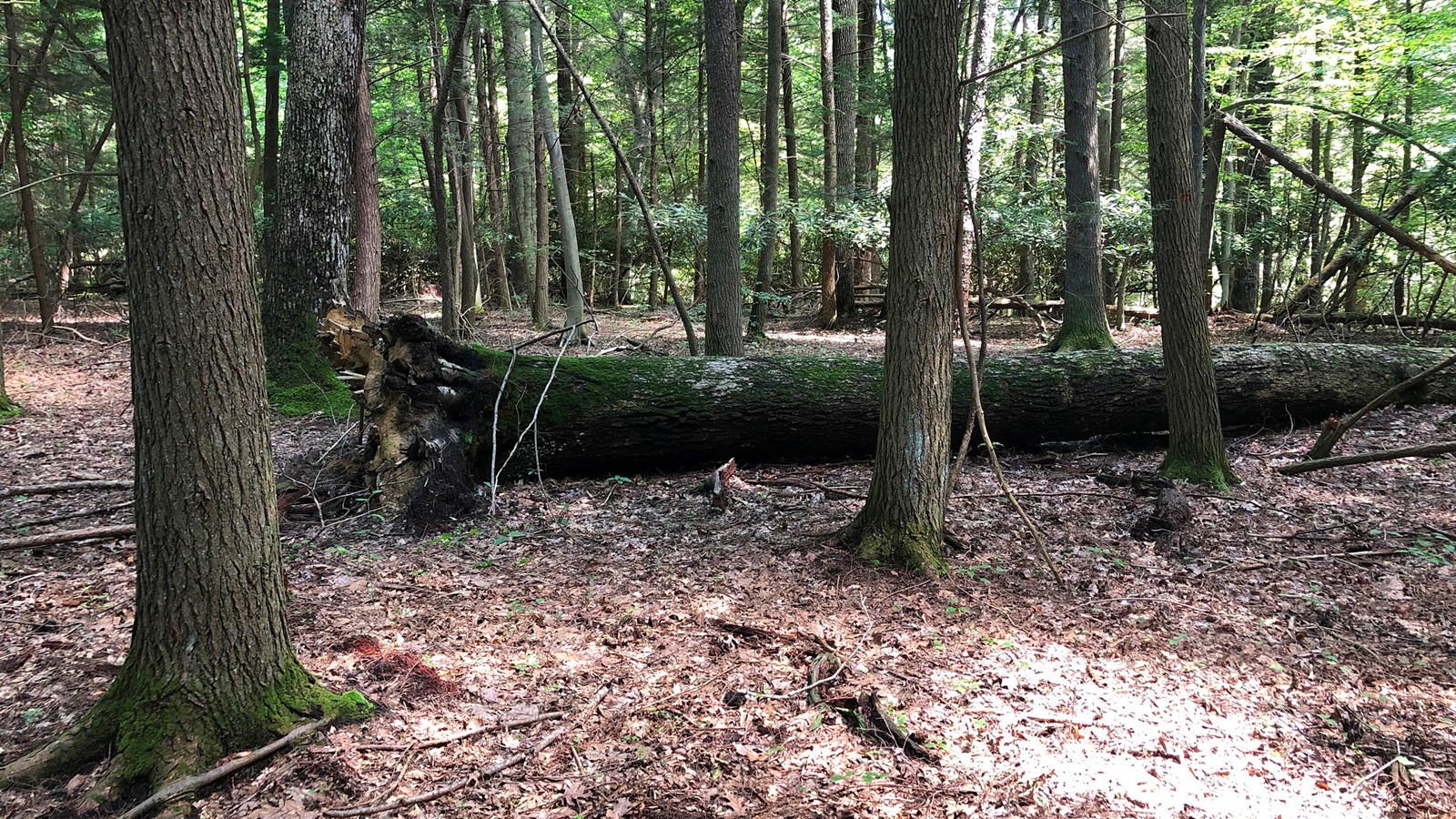Last updated: July 16, 2025
Place
Burnwood Trail Stop 8: Decomposition

Thomas Saladyga
Old-Growth Forest Hike Stop 8 - Decomposition
There are many different components other than just big, old trees that make up an old-growth forest. Large fallen trees on the forest floor, also called coarse woody debris, are a key feature researchers use to determine if a forest truly is old-growth. When a large tree falls it can take decades if not over a century for the wood to fully decompose. Finding this decomposing debris highlights that humans haven’t altered the forest by taking fallen wood for use. This rotting wood does not go to waste. The decomposition of wood recycles nutrients and carbon back into the forest soils, which act as long-term carbon sinks for greenhouse gases.
Coarse woody debris provides habitat for many species that grow and feed on moist, decomposing wood such as moss, lichen, mushrooms, and insects. Many species of wildlife rely on the large decomposing wood found in old-growth forests for their habitat. The moisture retained in the shaded forest floor and in the coarse woody debris create the perfect conditions for salamanders to flourish. Coarse woody debris is also used as denning habitat for smaller mammals such as foxes, skunks, and opossums. Dead standing trees called snags are also more common in old-growth forests and provide great habitat for bats, owls, and the cerulean warbler, a declining bird species that relies on mature, deciduous forests.
